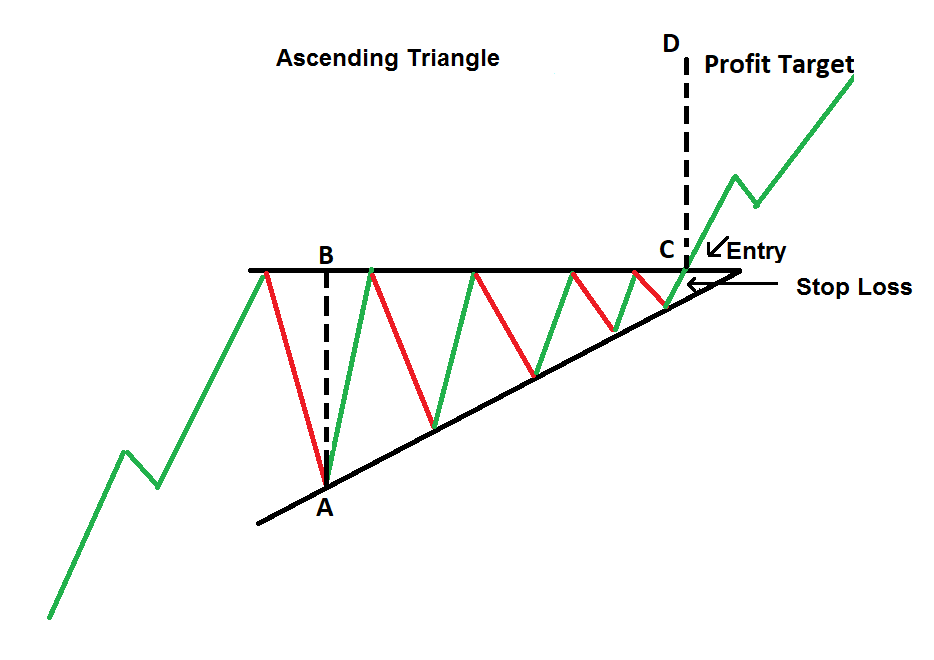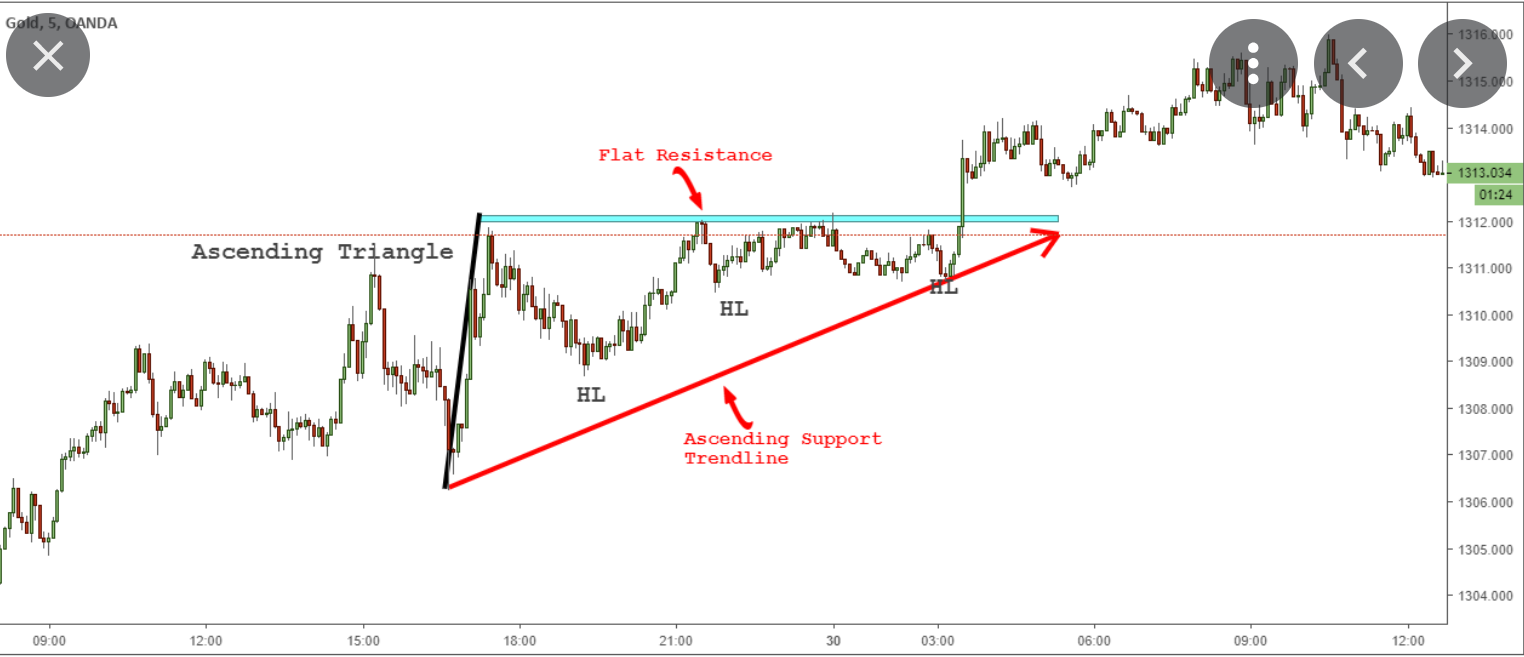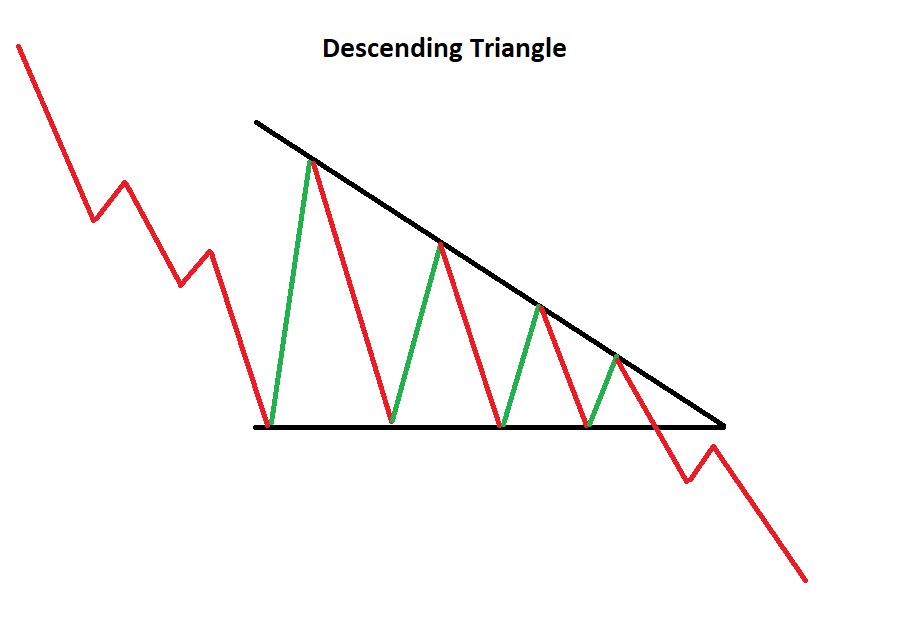Triangles
Ascending triangle
Here the observation is that there is a hard resistance to the price (Sequential swing highs do not pass that limit). This causes a hard horizontal line in the upper price of the stock. Concurrently, the swing lows keep getting higher. The line drawn between the swing lows is ascending, while the resistance line is flat, causing what is called an “Ascending triangle”.
Basically, the longers keep buying stock to raise the price, while the shorters sell stock to bring down. The fact that the price gets closer and closer to the resistance implayes that the buyers are dominating the game. If the price breaks above the resistance price, then the shorters know they lost, and in panic they will buy shares to avoid losing in their shorts, causing the price to go up.

Figure 4.14: Triangle
Here is a real example:

Figure 4.15: Ascending triangle
Descending triangle
The observation here is that there is a hard support level, and the swingn highs keep getting lower.
Basically, the shorters are on the attack selling stock (overflowing the market is supply)which causes the price to go down. The longers respond by buying stocks rasing the price. However, the fact that the buwing is not large enough cuases the swign high to appear lower and lower. If the price breaks below the support level, the longers know they lost, and wouldhave to sell to avoid lossing money. This will cuase the price to break lower.

Figure 4.16: Descending triangle
Symmetrical triangles
The observation here is that for each swing high there is an equal swing low. The fact that the price difference between the highs and lows gets smaller means that longers and shorters are fighting equally strong. If the price breaks above the line joining the high swign, then the longers won, and the price will go up.
If the price break below the line join the lower swings, then the shorters won. The longers panic to sell, causing price to go down.

Figure 4.17: Symetrical triangle